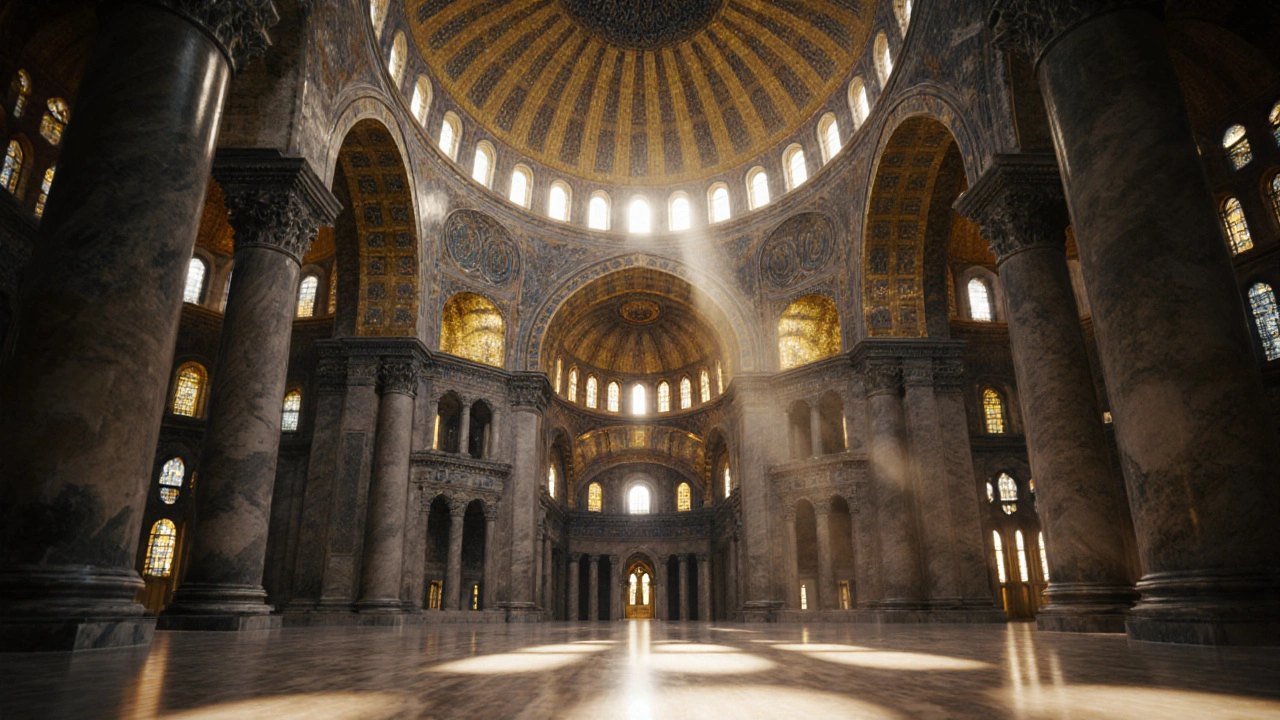Byzantine architecture used light, domes, and gold mosaics not just for beauty, but to create sacred spaces where heaven felt close. Its spiritual design still moves people today.
Religious Symbolism in Architecture: How Faith Shapes Buildings
When you walk into a cathedral, mosque, or temple, you’re not just seeing stone and wood—you’re stepping into a story written in form and space. Religious symbolism, the use of visual and structural elements to represent spiritual beliefs. Also known as sacred architecture, it’s how cultures translate the divine into buildings that people live with, pray in, and remember. This isn’t decoration. It’s design with purpose. A dome isn’t just a roof—it’s a sky held above worshippers. A pointed spire isn’t just tall—it’s a finger pointing to heaven. These aren’t random choices. They’re ancient codes, passed down through centuries, rebuilt in every era, from Roman temples to modern prayer halls.
Religious symbolism doesn’t live in isolation. It connects deeply with religious iconography, the system of images and symbols used to convey sacred stories and beliefs. Think of stained glass showing saints, carvings of lotus flowers in Hindu temples, or the crescent moon on minarets. These aren’t just pretty details—they’re visual sermons. And they’re tied to spiritual design, the intentional shaping of space to guide emotion, movement, and reverence. A church’s long nave pulls you forward. A mosque’s open courtyard invites stillness. A Buddhist stupa circles you in meditation. Every angle, light source, and material choice is meant to shape how you feel, not just what you see.
Look at the posts here. You’ll find Roman arches that once carried imperial power and later became church entrances. You’ll see Gothic spires that turned engineering into prayer. You’ll spot Renaissance domes that echoed ancient heavens, and Baroque interiors that drowned you in gold to remind you of divine glory. Even modern buildings carry these echoes—sometimes quietly, sometimes boldly. Religious symbolism doesn’t fade. It adapts. It gets rebuilt in new materials, new styles, new contexts. But the core? The longing to make the invisible visible? That never changes. What follows is a collection of posts that unpack how these symbols live in real buildings, across time and continents. You’ll see how faith didn’t just influence architecture—it became architecture.

